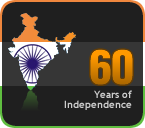
Of nearly 218 million children engaged in child labor around the world, the vast majority—69 percent, or some 150 million—are working in agriculture Bonded labor takes place when a family receives an advance payment (sometimes as little as U.S. $15) to hand a child-boy or girl-over to an employer. But the pressure on poor children - often from their own parents - to work remains strong. The use of children as soldiers is an abusive practice. Millions of women and girls around the world turn to domestic work.
Child labor in India is a grave and extensive problem. Children under the age of 14 are forced to work in match factories, cotton fields, fireworks, and in carpet-making factories. India has had laws since the 1930s banning children from working. Lawmakers pass new laws to protect children and ensure that even the most disadvantaged can receive an education. The Government of India reports about 20 million children laborers, whereas other non-governmental organizations estimate the number to be closer to 50 million.
More than 416,000 children under the age of 18, of whom almost 225,000 are younger than 14, are involved in child labor in India’s cottonseed production. Most of them are girls. They work in the states of Andhra Pradesh, Gujarat, Karnataka and Tamil Nadu, which account for nearly 92 per cent of the cottonseed production in the country.
Total Population: 998,056,000 Child Population: 398,306,000
Indian Laws on Child Labor
• Child (Pledging of labor ) Act, 1933
• Bonded Labor System Abolition Act of 1976
• Tamil Nadu Handloom Workers Act of 1981
• Child Labor (Prohibition and Regulation) Act, 1986
Estimates cite figures of between 60 and 115 million working children in India -- the highest number in the world (Human Rights Watch 1996, 1).
Recent figures from the International Labor Organisation (ILO) show that:
• Globally, 1 in 6 children work
• 218 million children aged 5 - 17 are involved in child labor world wide
• 126 million children work in hazardous conditions
• The highest numbers of child laborers are in the Asia/Pacific region, where there are 122 million working children
• The highest proportion of child laborers is in Sub Saharan Africa, where 26% of children (49 million) are involved in work.
Outsourcing labor to Asia, where wages are cheaper, and labor laws less stringent, is increasingly popular for Western fashion chains. Gap, the international clothing chain, with more than 3,000 shops, including about 200 in India, has called an emergency meeting with suppliers to investigate new allegations of forced child labor being used in the manufacture of their clothes.
The embroidered girl's smock blouse for Gap Kids from the sweatshop in Delhi was made using child labor. The children hand-stitching the beads were not paid, but the garment would have sold for about £20. Dan Henkle, Gap Inc's senior vice-president of social responsibility, called the allegations "deeply upsetting".
In the last fiscal, India’s exports of handmade carpets were around $800 million, with the U.S. market alone accounting for 50 per cent and Germany 20 per cent. India accounts for about 35 per cent of the world trade in handmade carpet.
The Child Labor Deterrence Act of 1993, which is still under consideration, prohibits importing to the U.S. any product made, whole or in part, by children under 15 who are employed in industry. While this aspect of the bill may be effective, the United States needs to take action regarding child labor abuses, specifically targeted at India.
From VOICE OF AMERICA
Vikram Srivastava, manager of development support at CRY says the government activities a token effort. "There's no strategic policy, plan or long-term or short-term intervention plan by the government, so even if there are rescues or ... a few employers who have been prosecuted, these things do not help in the long run."
Child rights activists complain that Indian government is too focused on legislation liberalizing trade and industry. "They get implemented very fast and very effectively," adds Narayanan. "But the policies on social sector - whether it is health, child labor or education - policies don't get implemented."
At the Labor Ministry, the person incharge rejects these complaints that the government is not sincere about the child labor problem. "There has been a lot of political will on the part of the government to eradicate child labor in the country, child labor is a very complex problem and the result of a number of socio-economic factors."
One of the factors is very simple to understand and transparent also. For employers, local as well as outside customers and for the parents there is nothing shameful about a child working at the cost of an education. Child labor remains widespread in India, despite the country's emerging economic power.
Also watch the video on Child labor in India : http://www.youtube.com/watch?v=R348etaQ4EE

